Friday, May 22, 1987 had begun as an uneventful day for the residents of Hashimpura, then a sleepy hamlet on the outskirts of Meerut in Uttar Pradesh. This village then had some 600 families, mostly Muslim, living there. The region had a history of violence in the name of religious faiths. Communal tensions had reached a flash point in February 1986 when a District and Sessions Judge ordered the opening of the doors of the disputed Babri Masjid-Ram Janmabhoomi structure to enable pujas by the Hindu community. Sporadic violence erupted across the state.
In April 1987, communal clashes broke out in Meerut. The state government called in its special police force, the Provincial Armed Constabulary (PAC) to contain the situation. The PAC was infamous for its ruthlessness. They successfully brought the situation under control. Once tensions eased, the PAC went back to the barracks. But that was only a temporary lull before the next storm. Violence kept resurfacing with a vengeance. On May 19, 1987, ten people died in the clashes between communities. An indefinite curfew was imposed over Meerut and surrounding areas. The Army was summoned. And the PAC too was back on the scene. The next day, rioters set a cinema hall near Hashimpura on fire, killing over twenty people and injuring another seventy-five. Madness filled the air. On 20 May, the authorities issued ‘shoot at sight’ orders. Then on 22 May 1987, tragedy struck Hashimpura.
It was the last Friday of the Islamic holy month of Ramadan (Alvida Juma). For the residents of Hashimpura, it was just another day of curfew and Ramadan fasting. Since all the shops remained closed because of curfew, households had run out of provisions. Yet they were looking forward to the customary breaking of fast after sunset that Friday. But it turned out that a good number of them would not break their fast at the appointed hour that evening. At least forty-two of them would not live to see the next sunrise.
By late afternoon that day, there was as security raid in Hashimpura. A large contingent of security forces swooped down on the village. The raiding party included personnel from the Indian Army, Uttar Pradesh Police and Provincial Armed Constabulary (PAC). The residents were under the impression that it was just another routine security exercise. But the security force personnel went on a rampage. They barged into Muslim homes and dragged all the male members out onto the streets. They abused and roughed up people who resisted or raised questions. None above the age of ten was spared. People were marched out of their homes with their hands held above their heads. They were asked to queue up in the lane outside. Praveen Jain, the Indian Express photojournalist, who was at Hashimpura when the crackdown was underway, writes about a little boy who ran in panic after seeing so many heavily armed people in uniform around him. A short distance away, the boy abruptly stopped and knelt down on the street to offer namaaz. It seemed to have suddenly struck him that only the almighty could save him from that scary situation. Jain says that this image of the terror stricken little boy kneeling down on the road and touching his forehead on the ground in obeisance refuses to fade away even after twenty-eight long years. “Looking at the child’s face, I could sense how helpless he was feeling. I don’t know what the child’s fault was,” he writes.
The people who were picked up from their homes by the security forces on that fateful evening were brought together on the main road. The Army then handed them over to the PAC. The PAC segregated the young and able-bodied men from that ragtag crowd that stood on the main road with their hands over their heads and their faces writ all over with terror and anxiety. The left over lot was packed into trucks and taken away. Reports suggest that they were brutally tortured before being locked up behind bars in the jails across Meerut.
The fifty or so young men whom the PAC personnel had plucked out from the crowd were asked to board a yellow truck. They were ordered to “kneel down, heads down, eyes on the ground”. Night had fallen on Hashimpura. Night was also descending on the lives of those who boarded that truck that night although they had no idea then about what awaited them. The PAC truck roared into life with a shudder and started racing through the night. Its human cargo had no idea where they were headed.
We do not have the precise chronology of the events of that night. We can only try to reconstruct it from the accounts of the few who miraculously lived to tell us the story of the incidents of that night. The PAC truck sped through the night. Sometime later that night it came to a halt close to the upper Ganga canal in Murad Nagar of Ghaziabad District. The passengers were asked to get down. As the young men climbed down, the night air exploded with the sounds of gunfire. The PAC men started shooting their captives. Those hit by bullets collapsed and writhed in deathly pain. The dead were lifted up and flung into the canal. Those still on the truck went berserk with dread. They screamed and scuffled with the PAC personnel. The cops shot them indiscriminately. The victims fell in a heap one over the other on the truck floor. Many died. Most suffered incapacitating injuries. The dead and living lay in a bloody mangled mass on the truck floor. The security men dragged down those on the truck, shot them at close range to ensure their death and threw them into the canal. Amid the commotion, a lucky few were mistakenly tossed alive into the waters.
Seeing the distant rays of an approaching headlight, the PAC men scrambled into the truck and drove away with a good number of their blood soaked captives still inside. The truck later halted on the banks of the Hindon River near Makanpur village in Ghaziabad. The operation at the previous site was replicated at the new location with assembly line precision. The next day bullet riddled bodies of 42 young men of Hashimpura were discovered floating in the canals around Ghaziabad. Five people miraculously survived through all these. They were all grievously injured and dripped blood while being thrown into the canals as dead. Nasir was one of them. He says that he had acted dead after a bullet hit his right arm. He lay in the water clutching to some weeds as one after the other bodies hit the canal water with blood chilling splashes. “The amazing thing is that we still have no idea why it happened,” says Nasir.
The police action made headlines when then MP Sri Chandra Shekhar (who later became Prime Minister of India) held a press conference in which Nasir too was present. The nation was shocked to hear about the atrocity of its security forces against defenceless citizens. Protests erupted. The Chief Minister Veer Bahadur Singh of the Congress party was forced to order a probe into the killing by the UP Crime Branch’s Crime Investigation Department (CB-CID). In the absence of 24 x 7 TV channels, the storms of public outrage were comfortably negotiated by those in power.
In the face of such a chilling human tragedy, one would have expected the wheels of justice to turn faster to render speedy justice. The investigation meandered on at a leisurely pace. Those in authority had little interest in taking things to its logical conclusion. There w as politics and communal equations at play. It took nearly ten long years for the agency to file the charge sheet before the Chief Judicial Magistrate, Ghaziabad. The charge sheet had accused nineteen PAC soldiers. They appeared before the court, which granted bail to all of them since it felt that as government employees there was no risk of them absconding. The state government suspended the accused from service for about six months. All of them were eventually taken back in service. The state government took more than two years to appoint a Special Public Prosecutor in the case. In 2002, the Hon Supreme Court transferred the case to the Delhi Tiz Hazari court. The trial just went on reaching no where. All the three CB-CID investigators died in the course of the trial. Of the nineteen PAC men accused, three died while the case was still in the court. Eventually the court delivered its verdict on the case on 21 May 2015. It acquitted all the accused.
as politics and communal equations at play. It took nearly ten long years for the agency to file the charge sheet before the Chief Judicial Magistrate, Ghaziabad. The charge sheet had accused nineteen PAC soldiers. They appeared before the court, which granted bail to all of them since it felt that as government employees there was no risk of them absconding. The state government suspended the accused from service for about six months. All of them were eventually taken back in service. The state government took more than two years to appoint a Special Public Prosecutor in the case. In 2002, the Hon Supreme Court transferred the case to the Delhi Tiz Hazari court. The trial just went on reaching no where. All the three CB-CID investigators died in the course of the trial. Of the nineteen PAC men accused, three died while the case was still in the court. Eventually the court delivered its verdict on the case on 21 May 2015. It acquitted all the accused.
After twenty-eight long years of court battles and the killing wait for justice, the system failed to deliver justice. None disputed the fact that those young men were picked up by the security forces on that fateful Friday evening of May 1987. None challenged the truth that those men were shot dead and thrown into the canals. There was nothing on record establishing the dead men guilty of any violation of law. Then why was there no justice for those at the receiving end of such pre-meditated extra-judicial mass murder committed by the agencies of the government? Do such things happen in a constitutional democracy that promises equal protection under the law for all? Why such apathy on the part of the people entrusted with the responsibility of ensuring equitable justice? And why are we not outraged enough against such a concerted attempt to deny justice to the poor and the powerless?
It should disturb every responsible citizen that justice is turning a monopoly right of the affluent and the influential at the expense of the weak and the meek. It is perhaps time that we asked ourselves whether we are really running a system that dispenses justice fairly and quickly. In cases after case, the shocking reality strikes us that the concept of equality before law is more a theoretical myth than a practical reality. Our system of justice works to benefit the rich and the famous. The rest of the citizenry should learn to be content with the occasional crumbs that come their way. Instances are galore. But I would limit it to just one more example of this glaring spectacle of inequality before the law.
It has been some thirteen years since the tragic incident leading to this court case occurred. The date was September 28, 2002. The first lights of the dawn were still hours away. The city mostly lay in lazy slumber. The Bollywood superstar emerged from the bar of Mumbai’s JW Marriott hotel. He was with some of his chums. His white Toyota Land Cruiser SUV was brought to him. He casually slipped a five hundred rupee note into the pocket of the parking assistant, opened the car door and slid behind the wheels. His police bodyguard and others filed into the car after him. His driver occupied one of the passenger seats. The superstar knew he was drunk. He also knew that he had no valid driving license. Yet, he insisted on driving the SUV that night. His companions tried to dissuade him. But he would not relent. Nothing on earth would stop a superhero either on the silver screen or on the solid earth. The vehicle swiftly moved out of the hotel and raced through the roads of suburban Bandra., Mumbai. The superhero was enjoying the thrill of the trip. Then in a flash, the car veered off the road and crashed into American Express Bakery close to his sea-front home in the Galaxy apartments. The actor opened the door, quickly slid out of the vehicle and vanished in to the predawn mist. The SUV had run over the people who were sleeping on the sidewalk in front of the bakery. One was killed. Four others suffered crippling injuries. Someone called the Police. An FIR was registered. A charge sheet followed. The actor was charged under the relevant sections of IPC, Motor Vehicles Act and Bombay Prohibition Act. The case went for trial.
The mega star had little interest in a speedy decision on the case. He perhaps realized that he was guilty. He was at the height of his career. A jail term would devastate his career. So, every trick in the trade was brought into play to delay the court proceedings. Several prosecution witnesses turned hostile during the course of the trial (for obvious reasons). 55 out of the 63 documents related to the case went missing. The victims could not match the glamour, influence and wealth of the accused. Not surprisingly, even the case diary vanished into thin air. While this farce was playing out in the court, the people who were mashed under the wheels of the actor’s luxury SUV stayed in the oblivion. They had no clout, glamour, wealth, or political or media support. They were nothing more than collateral damage in the drunken ‘tamasha’ of the Bollywood idol. Yet the victims believed that they enjoyed the constitutional guarantee of equality before law. So they lived hoping that the judiciary would eventually render justice to them.
The case dragged on for thirteen long years. The superstar continued unhindered with his career, raking in millions. And somewhere on the way, he turned a philanthropist. His attorneys seemed to have suggested how being a nice guy would benefit his case. So they glorified him as a saintly man whose heart bled for the poor and needy. But they conveniently forgot that their saintly client had never bothered to visit the victims of the accident or loosened his purse strings to support the kin of the dead or the men who would spend the rest of the lives confined to wheel chairs. It was indeed some saintly gesture to abscond leaving people trapped under his car fighting for life.
The actor testified before the trial court that his driver was at the wheel when the accident occurred. He told that while it was true that he had visited the bar he drank only water there. He disowned the food and beverages bills from the hotel. When the fact of excessive alcohol content in his blood was pointed out, his attorneys contested the expertise of the person who tested the blood samples and the procedures followed in the testing. But the police bodyguard had deposed saying that the actor was at the wheel and that he was drunk. But he too changed his statement later. He was declared a hostile witness. The Mumbai Police kicked him out of the force. He lived an indigent life and eventually died of tuberculosis – a fearsome example of what happens when you dare to take a stand against the high and mighty.
At last, on Wednesday, May 6, 2015, the Mumbai Sessions court arrived at the verdict that the super star was guilty of all the charges levelled against him. He was sentenced to five years of rigorous imprisonment. His lawyers had earlier argued that he should not be sent to jail since it would affect the social work he was doing. The plea was that the actor would not be able to finance his social support work unless he continued with his acting career. This was what his fans and apologists too had said after the verdict. They sought his acquittal since he was spending lavishly on charity. (The logic seemed to be that if you donate a part of your earnings to charity, you could go and murder anyone and get away with it!) The media was on fire. All the TV channels had their microphones and cameras riveted only on this superstar melodrama. Commentators vied with each other in their support to the star in distress. The nation was fed a blow-by-blow account of every movement and every word. We had graphic footages of embracing, kissing, consoling, tears, smiles, hand waves… The kind of media madness would have made us believe that it was Armageddon. A suicide attempt by a thirty two year old fan of the actor came in handy as an intensifier…
But none remembered the tragic plight of those people over whose living bodies the actor’s SUV had mercilessly rolled on. None had the time to see the tears welling in the sunken eyes of the crippled and the kin of the dead. The tweets that flew thick and fast in the aftermath of the verdict of the Sessions court gave a glimpse of the heartlessness of the apologists for the actor. Almost everyone was vehement in condemning the poor who slept on the footpath. But hardly anyone questioned the right of the superstar to drive on the footpath. One of the tweets reportedly said, “Sleep like a dog; die like a dog.” It speaks volumes about the condemnable attitude of the rich and famous towards the poor and homeless.
Irrespective of the VIP and fan reactions, the sensible citizens of this nation who still reposed their faith in the nation’s judicial system believed that the law was a leveller and that the accused was not escaping punishment. But it would come as a rude shock to such people to learn later that day that the verdict of the session’s court was just a transitory glimpse of justice. Later on the very same day (06.05.2015), the eminent lawyers of the superstar moved the Mumbai High court. The court heard their plea at 4 p.m. and an hour later, it granted him interim bail for two days. That was justice (or injustice?) at rocket speed! The system went overboard to ensure that the guilty would not see the inside of the jail.
But there was no need for any anxiety for the mega star that his reprieve was only for two days. On Friday May 8, 2015, the Mumbai High Court suspended the prison sentence awarded to him by the Sessions court and granted him bail, pending his appeal against conviction. The man, who apparently was instrumental to the killing of a poor man and the maiming of four others simply walked out of the court into to the boisterous welcome of his teeming fans. The bail bond sum of Rs 30,000 might have made him chuckle. His lawyers are happy. His family is happy. His fans are happy. His friends in the industry and outside are happy. Most politicians are happy. The media is happy. The only sad people are the victims of the superhero’s drunken adventure. And as insult over injury, we are told that we have the constitutional guarantee of equality before law. We know from experience that some are certainly more equal. (The superstar has since been acquitted of all charges!)
How far is our claim of equality before law true? Ask the victims of the Hashimpura Massacre. Ask the homeless people who were crushed under the wheels of the luxury SUV on the sidewalk of a Bandra road. Also ask the people who were crushed to death in Mumbai the other day (09.06.2015) because a thirty five year old corporate lawyer chose to drink like a fish and drive her luxury Audi Q3 at 120 kilometres an hour on the wrong lane for 11 kilometres through the Eastern Free Way. She reportedly jumped out of her car still wobbling on her feet and asked how much money the victims wanted for a spot settlement of the matter! It may sound the height of arrogance. But it only is an image of the reality around us. If you have political patronage or money in abundance or a great fan following you can get away with murder. The PAC men knew it. The Bollywood actor knew it. And the young woman lawyer knew it. Such people believe that they have an unquestionable prerogative to enjoy their lives as they choose even at the cost of destroying the lives of innocent people. They can do murder and get away with it because, as someone had put it, ‘lady justice’, “might be blind, but she can smell money coming”.No wonder someone coined the phrase that ‘The Law is a whore’. Yes. The Law is often a whore. She entertains only those who have the wherewithal to reward her adequately.


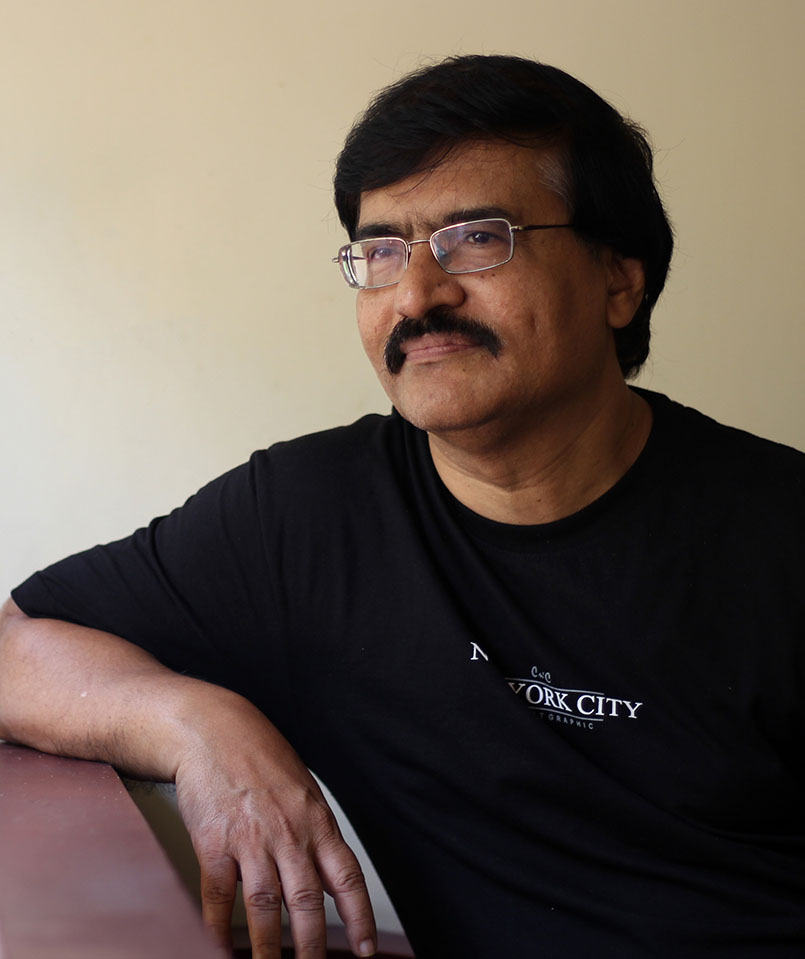
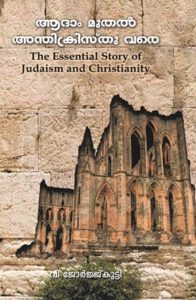
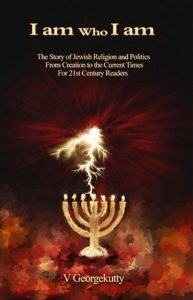




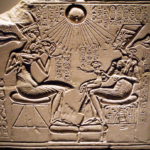
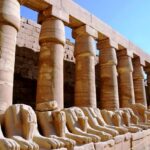
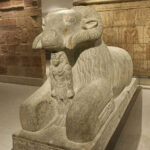

And that precisely is the reason in the STATE being the biggest prosecutor of its Citizenry (other than in criminal cases) because it has the power and pelf to get the biggest names in Law to its side and fight its subjects.
True to the hilt. Well written!
Thank you.